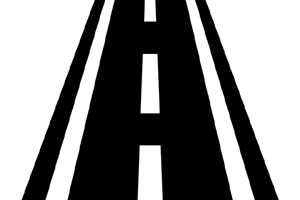In order to make the India-Asean Trilateral Highway a “live highway and economically sustainable”, both the sides are expected to discuss the “soft infrastructure” required, including customs and tariffs, at the Delhi Dialogue starting in New Delhi on Wednesday.
“We want the highway to be a busy one, so that trade to Myanmar, Laos and Cambodia keeps increasing. We need economic activity on the highway to sustain it, for trucks to go through,” said Anil Wadhwa, secretary (east) MEA.
The two-day event starting on Wednesday will also be attended by two chief ministers from the Northeast — Nagaland’s T R Zeliang and Mizoram’s Lal Thanhawla. “Building closer connectivity with the 10 countries of the bloc would figure high on the agenda, especially the India-Myanmar-Thailand Trilateral Highway, a 3,200-km highway that will connect India with the Asean. The highway to link Moreh in Manipur via Mandalay city (Myanmar) to Mae Sot in Thailand, is to be ready by 2018,” added Wadhwa.
The government has attached priority to this key highway and all parties involved have been working towards an early operationalisation of this highway. As part of India’s upgraded “Act East” policy, which seeks to strategically build India’s link with the Southeast Asian region, the India — Myanmar — Thailand Trilateral Highway is an ambitious project of 1990 that will connect India with the ASEAN region.
At the Delhi Dialogue, both sides will discuss how to utilise the $1 billion announced by Prime Minister Narendra Modi to boost physical and digital connectivity between both sides during the India-ASEAN summit in Kuala Lumpur in November last year. Also on the agenda would be the `500- crore project development fund announced by India to start investments in Cambodia, Laos, Myanmar and Vietnam (also known as CLMV countries). The CLMV countries cover 32% of the geographical area of the Asean region and account for about 9% of ASEAN’s GDP.
Arunachal Pradesh, Assam, Manipur, Meghalaya, Mizoram, Nagaland, Tripura and Sikkim make the northeast a ‘gateway’ to the ASEAN region. The completion of the India–Myanmar–Thailand Trilateral Highway is expected to expand trade and commerce opportunities, as increased connectivity is key to deeper integration with the ASEAN states. The highway is considered an important land route that connects India with Southeast Asia and beyond. The 3,200 km-long road begins at the India-Myanmar border town of Moreh (in Manipur) and passes through several Myanmarese towns including, Tamu, Kalewa, Yargyi, Monya, Mandalay, Meiktila, Myawaddy and finally reaches Mae Sot in Thailand. The four-lane highway is part of the proposed ASEAN East-West Corridor. According to officials, there is also a plan to link this road with the Trans Asian Highway-1 that runs from Japan (via ferry) to Turkey, where it connects the European highway after traversing through the Asian continent.
Under the Trilateral Highway project, about 78 km of new roads will be constructed, and the existing 400 km of roads will be upgraded along with the construction of all–weather approach lanes. In Phase 1, India will assume the responsibility of 78 km of missing links, upgrade 58 km of existing roads, and possibly improve a further 132 km of road. Thailand will upgrade a total of 192 km of road under this phase and will take up another 100 km under Phase 2. India’s Border Roads Organization has already upgraded the Tamu–Kalewa–Kalemyo road in Myanmar, and the Indian government is responsible for its maintenance.
